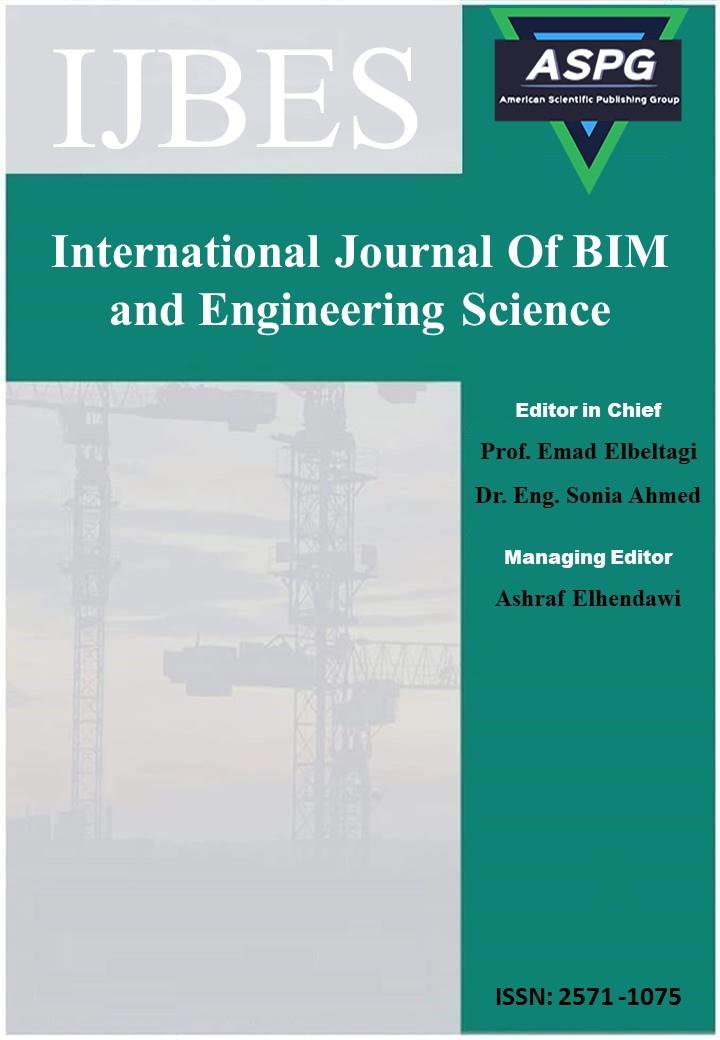

Volume 10 , Issue 2 , PP: 48-54, 2025 | Cite this article as | XML | Html | PDF | Full Length Article
Mary Abou Sekka 1 * , Naoras Khalil 2 , Alaa J Kadi 3
Doi: https://doi.org/10.54216/IJBES.100205
This study addresses the impact of modeling building materials on improving building sustainability by analyzing a case study of a residential building in the Baselia area of Damascus, which has experienced the removal of orchards, leading to negative environmental impacts. The research focuses on evaluating the carbon footprint of the building materials used in the structure and cladding, utilizing Autodesk Forma to analyze life cycle and energy efficiency. The study includes an analysis of the impact of five different building materials on carbon emissions during the stages of production, transportation, installation, use, and disposal. Results show that composite steel has the highest carbon emissions compared to other materials, while wood materials, such as timber frame and mass timber, have the lowest emissions. For internal cladding, the differences between materials were relatively minor. The study recommends selecting building materials with lower environmental impact and enhancing energy efficiency, which contributes to reducing carbon emissions in the construction sector and supports achieving sustainability goals.
Sustainability in Construction , Modeling Building Materials , Life Cycle Analysis , Environmental Impact of Building Materials , Carbon Emissions , Environmental Sustainability
[1] Hansen, A.J., Rasker, R., Maxwell, B., Johnson, J.D., Rotella, J.J., Parmenter, A.W., Langer, U, Ecological causes and consequences of demographic change in the New West: as natural amenities attract people and commerce to the rural west, the resulting land-use changes threaten biodiversity, even in protected areas, and challenge efforts to sustain local communities and ecosystems. BioScience, 2002. 52(2): p. 151-162.
[2] Gao, C., S. Wolff, and S. Wang, Eco-friendly additive manufacturing of metals: Energy efficiency and life cycle analysis. Journal of Manufacturing Systems, 2021. 60: p. 459-472.
[3] AlJaber, A., Alasmari, E., Martinez-Vazquez, P, Life cycle cost in circular economy of buildings by applying building information modeling (BIM): a state of the art. Buildings, 2023. 13(7): p. 1858.
[4] Ranjetha, K. Alengaram, U.J., Alnahhal, A.M., Karthick, S., Zurina, W.J.W., Rao, K.J, Towards sustainable construction through the application of low carbon footprint products. Materials Today: Proceedings, 2022. 52: p. 873-881.
[5] Füchsl, S., F. Rheude, and H. Röder, Life cycle assessment (LCA) of thermal insulation materials: A critical review. Cleaner Materials, 2022. 5: p. 100119.
[6] Lai, K.E., Rahiman, N.A., Othman, N., Ali, K.N., Lim, Y.W., Moayedi, F., Dzahir, M.A.M, Quantification process of carbon emissions in the construction industry. Energy and Buildings, 2023. 289: p. 113025.
[7] Kumar, V., Ricco, M.L., Bergman, R.D., Nepal, P., Poudyal, N.C, Environmental impact assessment of mass timber, structural steel, and reinforced concrete buildings based on the 2021 international building code provisions. Building and Environment, 2024. 251: p. 111195.
[8] Willar, D., Waney, E.V.Y., Pangemanan, D.D.G., Mait, R.E.G , Sustainable construction practices in the execution of infrastructure projects: The extent of implementation. Smart and Sustainable Built Environment, 2021. 10(1): p. 106-124.
[9] Chukka, N.D.K.R., Arivumangai, A, Environmental impact and carbon footprint assessment of sustainable buildings: an experimental investigation. Adsorption Science & Technology, 2022. 2022: p. 8130180.
[10] Sizirici, B., Fseha, Y., Cho, C.S, A review of carbon footprint reduction in construction industry, from design to operation. Materials, 2021. 14(20): p. 6094.
[11] Hemmati, M., Messadi, T., Gu, H., Seddelmeyer, J., Hemmati, M, Comparison of Embodied Carbon Footprint of a Mass Timber Building Structure with a Steel Equivalent. Buildings, 2024. 14(5): p. 1276
[12] Liu, Y., Cruz-Morales, P., Zargar, A., Belcher, M.S., Pang, B., Englund, E., Dan, Q., Yin, K., Keasling, J.D, Biofuels for a sustainable future. Cell, 2021. 184(6): p. 1636-1647.